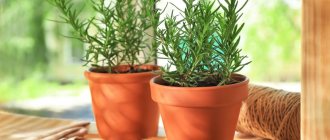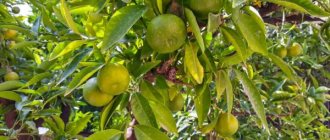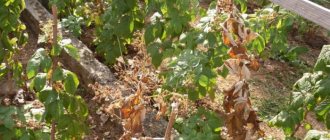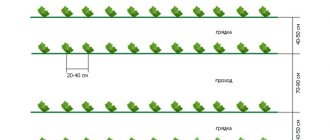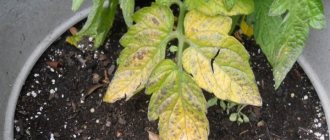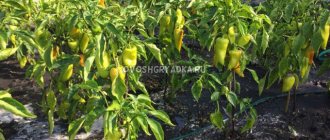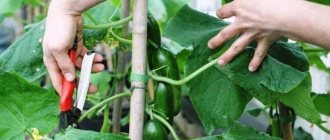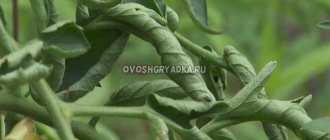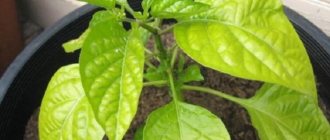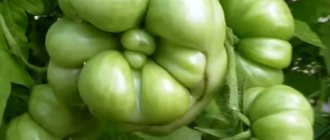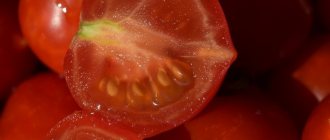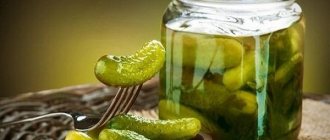How to deal with rust on a pear
Since juniper is the source of pear infection, both plants need to be treated. There are no special treatments for chronic juniper rust yet. Therefore, you need to constantly monitor the condition of the bushes growing near the pear plantings and, if they are damaged, immediately cut off the diseased branches and burn them.
Measures to combat pear rust:
|
Causes of leaf disease
With any adverse effect on the pear, its condition is reflected in the leaves, branches, and fruits. If the leaves of a pear turn black and curl, then the reasons for this condition can be completely different:
- lack of nutrition;
- lack of watering;
- fungal infection;
- viral infection;
- bacterial infection;
- pest attack.
A careful examination of the tree will help determine the exact cause of leaf damage on the pear and determine ways to eliminate it.
Sometimes it is enough to treat the pear with protective agents, but sometimes you have to cut out the dried area and burn it. It is important to understand that if the leaves on a tree dry out, this is always an alarming signal and action must be taken immediately.
Lack of nutrition
A lack of basic nutrients, as well as microelements, always affects the foliage of any fruit trees.
Lack of calcium - the edge of the leaves begins to darken, the top of the leaf turns black and curls. Adding calcium nitrate to the soil several times a season will solve this problem.
Boron deficiency results in blackening of leaves, deformation of shoots, and growth retardation in young pear seedlings. Spraying with a solution of boric acid will restore boron deficiency and normal tree growth.
Deficiency of phosphorus or magnesium - leaves on the lower branches become smaller, become smaller, may curl, dry out and fall off. The use of complex fertilizer will correct the situation.
Lack of potassium - the leaves begin to curl and take on a corrugated appearance. Purple or brown stripes appear along the edge of the leaf. In spring, the leaves sometimes become wrinkled and take on a boat shape. Drying ones are almost black in color.
Important! Filling the tree trunk circle with organic mulch and foliar feeding with microfertilizers will provide a full set of nutrients for the plant in any soil.
It is very important to distinguish fungal or viral diseases of pear from manifestations of a lack of macro- or microelements. In any case, the infectious disease will not disappear after foliar feeding.
Viral infections
Important! The most dangerous pear diseases are viral, as they cannot be treated. The infected plant is cut down and burned along with the roots.
Grooving of wood - cracks begin to appear on the pear trunk, similar to frost holes. Cracks in the bark disrupt the functioning of the plant's vascular system.
Various infections penetrate through them. The branches on the pear are twisted, the leaves also begin to curl from lack of nutrition and water. The cessation of exchange between the roots and the crown leads to the death of the plant.
Bacterial infections
Fire blight (bacteriosis) is caused by bacteria that are spread by rain and insects. Infection occurs through mechanical damage to the tree.
The edges and tips of the leaves begin to turn black, the flowers and ovaries turn brown and wither, the fruits become covered with black spots. The branches turn black, bend and dry out. If the trunk is affected, the blackened bark cracks and peels off. Affected leaves curl but do not fall off. The plant looks damaged by fire.
A diseased young seedling loses its foliage, first turns black and flies off the crown, bending like a hook. Then the entire seedling dies.
Pear suffers from this infection at the age of under six years; older, it is no longer susceptible to bacteriosis.
When the disease appears, the affected leaves and branches are removed, and the sections are disinfected with 3% copper or iron sulfate. Three times a season, the tree must be treated with a 1% solution of Bordeaux mixture. It is also recommended to water the pear and spray it with a solution of antibiotics:
- penicillin;
- tetracycline;
- thiomycin;
- rifampicin;
- streptomycin.
Two tablets are dissolved in a bucket of water and sprayed on the leaves of the diseased tree and other plantings within a radius of 5 meters.
Important! This disease is very aggressive. The best conditions for its spread occur when the leaves bloom, positive temperatures and high air humidity.
In addition to bacterial burn, pears can be affected by bacterial necrosis of the bark and bacterial cancer of the roots.
Fungal infections
Fungal infection is a fairly common disease of all fruit and berry crops. Fungi are a common reason why pear leaves turn black in the garden.
There are different types of infections:
- scab;
- black cancer;
- cytosporosis;
- powdery mildew;
- moniliosis;
- sooty fungus.
Scab is the most common pear disease, which manifests itself as a characteristic spotting. Leaves and fruits are covered with numerous small and dark spots.
Over time, they grow and appear on the fruits. Black spots on pear leaves contribute to their premature drying. The leaves fall off, the fruits stop growing, lose their taste and become deformed.
Treatment consists of regularly treating the wood with Bordeaux mixture. When the buds open, it is necessary to treat the pear with a 3% solution of liquid, after flowering - with a 1% solution, 3 weeks after that - with a solution of Horus or Skor fungicide.
Black cancer is a very dangerous disease of fruit trees. More often, the disease affects old and weak trees. The leaves of the pear turn black, as well as the trunk, branches, and fruits. Affected areas of wood die, leaving wounds on the tree.
This disease is difficult to treat. Dark areas on the wood are cut out along with the border to healthy wood. The wounds should be treated with a 5% solution of iron sulfate and, after drying, covered with garden pitch.
Sooty fungus - forms a black coating in the form of soot on the leaves of young trees. Infection is carried by insects, most often aphids. For removal, mixtures of the fungicide Fitoverm with the insecticide Calypso are used.
Pests
There are quite a lot of pests of fruit trees in our gardens. They lead a secretive lifestyle, and only the sad consequences of their life activities betray their presence.
Aphid
Colonies of numerous very small green or black insects settle on the tops of young branches. They feed on plant sap, causing the leaves on the branch to curl into a shapeless lump. After some time, the leaves turn black and dry out.
Pear copperhead
This is a small insect up to 3 mm long. Young seedlings are most damaged by it. The larvae secrete a sticky liquid called honeydew. Buds, flowers, ovary and young leaves stick together. Sooty fungi grow on the dew, causing the leaf to turn black and young shoots and fruits to become covered with a black coating.
Mite
Gall mite - difficult to notice, it hides inside the buds. If swollen spots appear on the leaves, this indicates the presence of a pest. First, the pear leaves turn red, then darken, dry out and crack.
leaf roller
Its presence can be easily recognized by the leaves rolled into a tube. Leaf roller caterpillars appear in the spring, feeding on leaves that have been rolled up with the help of a web. Caterpillars wrap themselves in leaves to transform into butterflies.
The leaves begin to curl immediately after regrowth. This pest destroys not only the green mass, but also flowers, buds, and ovaries.
When the leaf roller appears, you can forget about the pear fruits. It is especially difficult to get rid of caterpillars that curl up in leaves; chemicals will simply not get rid of them. In such cases, manual collection of damaged leaves is required.
The reason for the blackening and drying of leaves on a pear tree even when attacked by pests is different. However, the method of getting rid of insects is the same. For the prevention and destruction of overwintered insect pests, in early spring, on bare branches, they begin to treat the garden with protective agents.
Pest control measures involve the use of chemical or biological protective agents - fungicides. In spring, it is recommended to spray trees with a 3% solution of copper sulfate or a 1% solution of Bordeaux mixture. These substances protect the garden from pests, infections, and the growth of moss and lichen on the tree.
If a tree is severely damaged by insects in the previous season, it is better to spray it with a tank mixture of fungicide and insecticide such as Skor, Horus and Aktara.
Important! You can treat pears with chemical control agents no more than three times per season.
But this is quite enough to get rid of pests. Treating pears before and after flowering allows you to get rid of the next generations of insects and pest larvae.
It is important to clean the tree trunk from dried bark every fall and whiten it with a lime solution.
Improper care
Lack of moisture in the soil during a drought or due to an incorrectly chosen planting location undoubtedly leads to pear leaves curling, withering and falling off.
The most common way to eliminate this problem is regular watering. Filling the planting hole with hydrogel swollen in water allows you to water the pear much less frequently, since the hydrogel gives up its water supply over a long time.
A common reason why a pear trunk may turn black is damage to the tree by low temperatures. The blackened bark may peel off, and the tree trunk becomes covered with frost cracks. Such trees must be treated by clearing frost holes, treating them with garden varnish, and feeding the weakened tree.
Diseases of the trunk and roots of pears and treatment
On the bark, roots and skeletal branches of the pear, diseases do not occur as often as on the leaves and fruits. However, they are very dangerous because they directly affect the life of the tree. If you do not pay attention to the emerging symptoms of the disease, the pear will quickly wither and all that remains is to uproot it. By correctly identifying the disease and its source, you can save the crop and prevent the tree from dying. With diseases of the trunk and roots, cracks appear, color or structure changes.
Attention! As soon as rusty spots, growths, or uncharacteristic plaques are noticeable on the branches and trunk of the pear, you need to inspect the tree to determine the disease and take action. In this case, you can save the crop and tree.
Black cancer
This disease is popularly called Antonov's fire. It has been developing over several years. You may notice that small cracks have appeared on the main branches and trunk. The bark is covered with wet brown spots. They are open wounds into which fungi, germs and bacteria penetrate. In turn, they provoke the development of diseases that destroy the crop and the entire tree. In order to save the pear, the infected areas are cut out, capturing the healthy part of the bark. The cut is disinfected with copper sulfate and lubricated with garden varnish or mullein with clay. Fallen leaves must be removed quickly and burned.
Cytosporosis
This disease is an infection that causes the bark of pear tree branches to dry out. Moreover, the crust may not change its characteristic color. But convex gray fruiting bodies appear on it. If you do not fight them, then after the buds awaken, they will begin to dry out. After this, the branches and the entire tree will begin to dry out. During winter, the infection is not active - it hides in the bark of infected branches. Cytosporosis is difficult to treat. It is recommended to carry out prevention by adhering to agrotechnical rules, feeding and properly watering the tree. As soon as the first signs of the disease are noticed, infected branches are removed and burned. Immediately treat the wood with a 1% solution of Bordeaux mixture or similar preparations. In spring, the treatment is repeated even before the leaves appear.
Bacterial burn
This infection affects all parts of the pear tree located above the ground. It often starts with flowers, then bacteria move to leaves, branches, trunk and bark. Over time, the entire tree looks as if it had been burned by fire. And in this case, there is no point in engaging in treatment. The pear is uprooted and burned. And exclusively in the place where it grew. It is prohibited to move it around the garden. Thus, the progression of the bacterial burn is localized. Successful treatment depends largely on the timeliness of infection control. At the initial stage, you can use products that contain copper. A mixture of lime milk and 1% copper sulfate solution is prepared.
The tree is sprayed with it 5 times throughout the summer:
- when buds appear;
- when the leaves bloom;
- after flowering;
- 2 weeks after the previous treatment;
- after harvest.
A progressive disease requires radical intervention. Infected branches are cut off and the pruning areas are treated with antibacterial drugs. Antibiotics such as Fitosporin, Tetracycline, and Streptomycin have proven themselves well in the treatment of this disease.
Treatment options
Treatment must be comprehensive. You cannot delay therapy. Otherwise, complications will occur. In the absence of disease, preventive treatment is necessary. This is the best option for protecting the pear and the entire garden.
Important!
Without treatment, the tree will sooner or later die completely. Scab spores spread to all plantings in the garden.
Medicines for the disease
Drug treatment is the most effective. This helps completely stop the spread of the disease. For the first time, the planting is processed before the buds open. With timely treatment, pear fruits retain their attractiveness.
For the first treatment, Bordeaux mixture is used. Use a mixture of 3% concentration. Spraying is carried out every 2 weeks. About 5 treatments are carried out per season. Additionally, the use of fungicides is required. The most effective drugs are:
- Speed;
- Strobe;
- Horus.
Treatment preparations are used in accordance with the instructions. When using chemicals, be sure to wear gloves, a gown, and a cap. The respiratory organs are protected with a respirator.
Importance of Fertilizers
Scab may be the result of a lack of nutrients. The deficit needs to be filled. Properly selected fertilizers will increase the protective functions of the planting and increase the frost resistance of the plant.
Important!
A lack of nutrients is just as harmful as an excess of them.
It is recommended to apply mineral fertilizers. This is not only a way to combat scab, but also foliar feeding. For 10 liters of water you can take one of the following preparations:
- 10 g ammonium nitrate;
- 10 g ammonium sulfate;
- 7 g of potassium nitrate.
Fertilizer is applied after harvesting.
Folk recipes
To combat the violation, you need to use a solution of soapy water. The procedure is repeated every other day for 14 days.
An alcohol solution is highly effective. To prepare it, dilute 400 ml of alcohol and 1 tbsp in 1 liter of water. l. liquid soap. The plant is treated with the resulting mixture before sunrise.
Preventive measures
Before buying a pear, you need to take into account the climatic conditions under which the tree will grow in order to prevent diseases in the future against the background of a decrease in the seedling’s immunity due to the unadapted nature of the variety.
After working with an infected tree, disinfect garden tools. If the fruits and leaves of the pear turn black, pick them off the seedling. Remove fallen leaves from the area, as they may be infected with a fungus or pests may overwinter in them. To destroy pests that burrow into the ground for the winter, the soil is plowed at the end of autumn. To improve air circulation between the branches, the crown is periodically thinned. Dry branches are cut off, and the cut areas are covered with garden varnish. For the purpose of prevention, seedlings are sprayed in early spring and late autumn. To protect the tree bark from pests, diseases, the sun, the trunk and skeletal branches are painted with whitewash or special paint. Birds help reduce the likelihood of some pests, so you can put several birdhouses on the site. To scare away butterflies that lay eggs on pears, you can plant daisies, marigolds, and wormwood next to the trees.
To protect pear seedlings from diseases and pests, it is necessary to carry out preventive treatment with drugs against common diseases in spring and autumn, and promptly treat cracks in the bark. Collect and remove fallen leaves and fruits from the soil, so that in case of infection, the infection does not appear on other plants or spread throughout the entire area.
Scab on pear leaves: black spots and treatment methods
This disease manifests itself as black spots on the leaves of the pear, which lead to the loss of the tree's leaves. Scab is a fungal disease. At the beginning of its development, the leaves become covered with grayish spots with a characteristic oily coating, later the spots turn black and the leaves die. The causative agent of the disease is located on the underside of the leaf.
The progressive disease spreads to young shoots, which leads to their death. The bark on the branches peels, swells and cracks. The affected tree does not develop ovaries. The fruits turn black and fall off. The pulp in the affected areas becomes woody. The insidiousness of the disease is that it affects not only the shoots, leaves and fruits of the pear, but also the flowers. On such trees there is no ovary or its quantity is small.
The pathogen overwinters in fallen leaves, young shoots and fruits.
Methods to combat scab
If scab is noticed on the site, then in the fall it is necessary to collect all the dry leaves and burn them outside the garden. You also need to shallow dig the soil under the trees to get rid of any remaining fungal spores. In early spring, soil and plants are cultivated. It should be done before the buds open and the sap begins to flow. They use a solution of nitrophen, which acts not only on scab, but also on other types of fungal diseases.
Scab infection most often occurs due to thickening of plantings and inept pruning.
It is important to prevent thickening of the tree crown and to trim shoots growing inwards in a timely manner.
A good prevention of scab is to treat pears with Bordeaux mixture. The number of treatments depends on the degree of damage to the tree. The first treatment is carried out before buds open, the second after flowering. Subsequent treatments can be omitted if no previous outbreaks have been observed.
Important! After flowering, use a 1% solution of Bordeaux mixture, which reduces the risk of burns on the leaves. Experienced gardeners in the fight against scab recommend using systemic drugs that have a destructive effect on various diseases
Experienced gardeners in the fight against scab recommend using systemic drugs that have a destructive effect on various diseases.
How does blackening appear?
Black spots on pear fruits are accompanied by different symptoms. Signs of a disorder directly depend on the cause of the disease. Pathology can extend to:
- trunk;
- fruit;
- foliage
Important!
Some abnormalities are contagious. If left untreated, the disorder will spread to other trees and shrubs. The violation may make itself felt 2-3 weeks after infection. Any disease has a separate incubation period. During this period, there are still no symptoms. On pear fruits, black spots have a velvety coating. The pulp under the damaged area deteriorates. The fruit begins to rot from the inside. After a while, the peel completely cracks.
Invisible light spots first appear on the foliage. The affected areas gradually darken. Fruits on the tree lose their presentability. The pear is not suitable for consumption. Almost the entire harvest has to be thrown away. Fruits may become deformed if disturbed. Affected foliage and pear trees fall off. Sometimes symptoms on fruits appear after picking and storage.
Bacterial burn of pear (bacteriosis)
If your plant looks like it has been damaged by fire - not only the leaves, but also branches with flowers or fruits and even the trunk are covered first with brown and then black necrotic spots - it’s time to sound the alarm. Most likely, the pear is affected by a dangerous infectious disease called bacteriosis (bacterial burn).
The spreader of the disease is Erwinia bacteria, which move throughout all tissues of the infected plant with sap. Pear is one of the crops most susceptible to this scourge. Infection can occur in several ways:
- when pruning branches with a non-sterile instrument;
- when using infected planting material;
- through mechanical damage to branches and bark;
- when the plant gets pollen from a neighboring infected tree;
- with the help of vectors (insects, birds, wind, rainwater).
The spread and development of bacteriosis is facilitated by thickets of bushes near cultivated plantings, uncollected infected last year's plant debris on the site, as well as warm and humid weather.
Primary infection usually appears already in June - be careful, it is much easier to get rid of the infection in the early stages! Tender young flowers and leaves begin to darken, curl and dry out, then the damage spreads to thin shoots, from them to thick branches and trunk, the bark of which begins to crack, bubble and secrete a white-yellow exudate (mucus), thin “strings” of which easily spread to surrounding plants by the wind. If the fruits have time to set, they also turn black, do not ripen and remain hanging dry. The active development of bacteria in wood tissues causes their rapid death.
If a tree is severely affected, other than uprooting it and mandatory burning, alas, there are no options to combat the disease. If you catch bacteriosis in the initial stages, you can try the following methods:
- remove all affected parts of the plant and treat the cut areas with a 1% solution of copper sulfate;
- during the flowering period, 3 times with an interval of 4-5 days, treat the garden with antibiotics (streptomycin, gentamicin, tetracycline, thiomycin, agrimycin) at the rate of 1 thousand units per 10 liters of water;
- use fungicides and antibacterial agents according to the instructions (Azofos, Gamair, Fitolavin).
And, of course, in order to avoid a repetition of the situation, do not forget about timely preventive measures: disinfect garden tools and containers, promptly destroy plant debris on the site, uproot wild fruit trees and hawthorn within a radius of 100-150 m from your garden (as potential foci of infection) .
Fire blight - what to do if a tree “burns” Are the trees in your garden turning into “emerses”? Most likely, they were struck by a dangerous and common disease - bacterial burn.
Pear leaves turn black due to disease
Few diseases lead to blackening of the leaf mass, so recognizing them is not difficult.
Scab
When affected by scab, not only the leaves turn black, but also the flowers, shoots, and fruits. A fungal disease develops for several reasons, knowing which you can prevent damage:
- wet and cold weather in spring;
- age of seedlings (young and old specimens get sick);
- variety instability.
For preventive purposes, the pear is sprayed with Bordeaux mixture, karbofos or less aggressive preparations: “Chorus” and “Topaz”. Spraying is carried out repeatedly, starting in early spring.
Advice from experienced gardeners! Thin out the plants so that they are well blown by the wind.
If there are a lot of trees in the garden, tall flowers and shrubs grow, then fungal diseases cannot be avoided. Thin out dense thickets to reduce humidity and prevent infestation.
Bacterial leaf scorch
The most dangerous disease that leads to blackening of leaves is bacterial burn. This is a viral disease, as a result of which the leaves turn black, tissues of the plant die and it dies. Outbreaks of the virus begin suddenly, affecting all the trees in the area, they look scorched.
The causes of the lesion have not been identified; it is useless to fight the virus. It has been noticed that trees overfed with mineral fertilizers and overloaded with fruits are affected. The disease massively affects young seedlings up to 10 years old; older specimens are more resistant.
Spraying with any preparations containing copper will help prevent bacterial burns and increase the tree's resistance. Treatments begin in early spring. If the tree still becomes infected, then the burned parts must be cut off, capturing healthy tissue, and disposed of by burning. After which the tree is sprayed with an antibiotic solution, for example, Ofloxacin. Unfortunately, even these methods do not always work, and the seedling dies completely.
Source – zhenskoe-mnenie.ru
Improper care
With improper watering, irregularities in the dosage of fertilizers, or a lack of microelements, the leaves of the pear turn black. If you notice that the foliage on the pear has turned black, but there are no signs of infection or the presence of pests, therefore, the reason is non-compliance with the rules of care.
Signs of micronutrient deficiency:
- nitrogen - the leaves become smaller and turn yellow, fall off prematurely, the bark on the branches turns red, the fruits become smaller, fertilize with potassium, ammonium, sodium nitrate, ammophos, urea;
- iron - the leaves become yellow or white, fall off, the top dries out, the fruits become smaller, treat with Ferrovit, Micro-Fe;
- calcium - young leaves turn white and curl, fall off, the tops of the shoots die, the ovaries fall off, chalk, dolomite flour, and slaked lime are added to the soil;
- phosphorus - leaves and young shoots acquire a bluish tint, the lower leaves gradually dry out and fall off, fallen leaves are black, feed with potassium phosphate, phosphate flour, superphosphate.
Note! If there is an excess of one or another microelement, the absorption of other substances is impaired, so when applying fertilizers you must follow the instructions given by the manufacturer. For example, if there is an excess of magnesium, calcium is poorly absorbed; if there is a lot of molybdenum, then copper is not absorbed; if there is more phosphorus than normal, iron, nitrogen, and zinc are not absorbed.
In the heat, when there is little rainfall, and if watering standards are not observed, the tree does not have enough moisture, so the leaf becomes lethargic, the plant weakens, and the tips of the leaves turn black. In summer, it is necessary to regularly water and sprinkle to wash away dust and improve oxygen supply and photosynthesis.
Diseases of pear fruits: photos and descriptions of signs of infection
In many gardens there are fungal diseases of pears that affect fruits, and fighting them is the daily concern of gardeners. If fruit trees are not treated in a timely manner, the entire garden may become sick. The sooner you take care of prevention, the greater your chances of growing a good harvest of fruit.
Pear scab (lat. Venturia pirina Fusicladium pirinum)
Scab affects many garden crops. The causative agent of scab is the fungus Fusicladium pirinum.
The disease can be recognized in its early stages by the following signs. Leaves are affected: olive-colored spots with a characteristic velvety coating (this is an accumulation of spores of a parasitic fungus) form on the underside of the leaf blade.
Next, the scab appears in the form of putrid dark spots on the fruit, the peel in these places cracks, and the pulp itself becomes hard. When fruits are infected early, they become deformed and become asymmetrical.
To prevent scab, you need to spray the trees three times with 1% Bordeaux mixture:
- the first time - with the appearance of greenery;
- the second - for pink buds;
- the third - after the end of flowering.
One of the best preventive measures against scab is good ventilation and access to oxygen. To do this, be sure to thin out the tree crown. The soil in the circle around the trunk is constantly loosened, and the carrion is regularly removed.
In autumn, fallen leaves must be burned. Heavily infected trees should be treated with Dnok or Nitrafen paste. Good treatment results are shown by treatment with systemic fungicide Skor. Such drugs are used strictly according to the instructions.
The following pear varieties are resistant to scab: Muratovskaya, Rusanovskaya, Yanvarskaya.
Fruit rot or Moniliosis (lat. Monilia fructigena)
The causative agent of moniliosis of stone fruit crops, apple and pear, is the fungus Monilia fructigena. Fruit rot appears as brown spots on the fruit.
Later, growths are formed containing fungal spores. They are spread by wind and insects throughout the garden, infecting other crops. The pulp of an infected fruit becomes loose and loses its taste.
Some of the affected fruits fall off, while others dry up right on the branches, which is the main cause of the disease next year. Massive damage to fruits is observed in the second half of summer, when the crop begins to ripen and the weather is hot and humid.
A measure to prevent the disease can be:
- timely pruning of trees;
- installation of barriers and fences that do not block air flow;
- regular collection and destruction of diseased fruits.
In spring and autumn, be sure to spray with 1% Bordeaux mixture or HOM. At the beginning of the season and before the onset of cold weather, treatment with lime milk is necessary (1 kg of lime per 10 liters of water).
Good results are obtained by using a bio-cocktail of several drugs at the same time: Actofit, Ecoberin, Healthy Garden and Baikal. They are given foliar feeding throughout the season. This cocktail strengthens the plant’s immune system, protects against stress and pathogenic fungi.
There are no pear varieties that are completely resistant to Moniliosis, but they are distinguished by high immunity: Honey, Autumn Dream, Cheremshina.
Sooty fungus (lat. Fumago vagans Pers)
Often on forums you can find a question about pear disease: leaves turn black, how to treat such a disease. In the second half of summer, a black coating resembling soot can be found on the leaves and fruits of pears. The cause of this is sooty fungus. First of all, the disease affects weak plants that do not have enough minerals, damaged by pests or other diseases.
The nutrient medium for it is the sugary secretions of insects, such as aphids, which damage the surface of the plant and reduce its immunity. Fungal spores easily survive winter under bark and in dried leaves.
Prevention of the disease is the use of the insecticide Calypso, which is used to prevent the accumulation of harmful insects. Together with it, the gentle fungicide Fitoverm is used, which suppresses the growth and reproduction of the fungus.
High immunity to many fungal diseases, and the Cathedral pear variety is practically protected from damage by sooty fungus.
Pear scab
The causative agent, the fungus Fusicladium pirinum, affects many garden and vegetable crops. This is the most common disease of pear fruits, but the leaves of the tree are often affected.
At the initial stage of the disease, olive and yellowish spots with a velvety coating (this is an accumulation of fungal spores) appear on the underside of the leaf blade. After which the disease spreads to the fruits: they become covered with dark putrefactive spots, and the peel cracks in these places. The fruits become deformed and become tasteless.
Non-communicable diseases of pear
Non-infectious plant diseases appear due to the gardener’s failure to comply with the basic rules of agricultural technology:
- incorrect choice of landing site;
- non-compliance with care standards;
- sudden temperature fluctuations;
- lack of timely feeding;
- low quality soil mixture.
These conditions include:
- Chlorosis - develops due to a lack of iron, magnesium, manganese, sodium, oxygen, sulfur. The problem occurs when carbonate content is high. Yellowing or whitening of the apical shoots is observed, the fruits are deformed and crumble.
- Hydrothermal burn is the result of exposure to sunlight combined with high soil moisture. The main reason is improperly organized plantings. At the same time, the leaves suddenly turn black and die.
- Sun-frost burn is a consequence of temperature changes inside the trunk and on its surface. The branches freeze and then die.
- Non-infectious proliferation. The plant's dormant buds suddenly wake up and side shoots grow. They must be removed, as they thicken the crown and prevent fruit-bearing branches from developing.
Plant diseases and the fight against them are what should concern the gardener first. Many of the problems listed in the article can destroy the crop completely, leaving the gardener without a plant and a harvest for several years.
Elena Vasilyeva
Scab treatment
- First, you need to start with prevention. All fallen leaves in the fall are either burned or composted. The duration of composting should be at least two to three years.
- Thickened crowns must be trimmed and the tree trunk circles must be dug up (at least a meter in diameter).
- In the fall (on dormant buds), trees are treated with a 5% urea solution. For tree trunk circles, use a solution with a concentration of the active substance of 7%.
- When the buds begin to open, a solution of 3–4% Bordeaux mixture is made for spraying. If time is lost, during the extension and separation of buds, the trees are treated with 1% Bordeaux mixture. In cases where it is not possible to produce it, for ten liters of water take: 30 grams of azophos, 40 grams of copper chloride, two milliliters of SKOR (an excellent fungicide), and also six grams of Bayleton. All these substances (except for the copper compound) are completely safe for leaves, and the composition itself as a whole does not cause even minor chemical burns to tree tissue.
- After flowering is completed, spraying is repeated. If the season is conducive to the development of scab (high humidity, low temperature), then the number of treatments can be increased to six. It is necessary to take into account the need for breaks of two to three weeks. In addition, you should alternate the drugs used. Please note that at least 20 days must pass from the last spraying to harvest.
What else can a pear be affected by? Diseases of leaves and fruits, unfortunately, are quite common, and therefore the list will not be too short.
What causes blackening?
If the above symptoms do not apply, the cause may be a crop disease. Its causative agent may be an infection.
Bacterial burn
The dark frame along the edges of the leaf absorbs the entire leaf plate, then it dries out and curls up. The disease mainly affects young trees under ten years of age. Without taking emergency measures, death occurs and this process begins from the central part of the tree. Old trees are practically not affected, because young pear branches are tender, with active sap flow, but weak immunity. There are varieties that are inherently resistant to various diseases.
Scab is caused by a marsupial fungal pathogen
It appears on the reverse side of the leaf plate as black dots, then they move on to the shoots, flowers and fruits. The shoots are covered with swollen cracks, which the pathogens use for wintering.
Pests also overwinter well under leaf fall; their favorite habitat is rainy weather, heavy dew, warmth and high humidity. To eliminate the risk of infection, leaf litter is raked and burned off-site. It can be put into compost, but it must ferment for at least two years.
Pear leaves also turn black from dry air and low humidity. Sometimes even frequent watering does not help the plant. Southern varieties are especially sensitive to growing conditions that are unsuitable for them. Gardeners with experience in such cases use drip irrigation of the crown.
One of the main distributors of plant diseases is aphids. This is a parasitic enemy of fruit trees. You need to get rid of it quickly. Drinking sap from the crown, it exhausts and dehydrates the tree; lifeless leaves become black and curled into a tube.
Causes of the disease
The causative agent of scab is a fungus. In spring, after rainy weather, the wind carries its spores from old leaves to trees. Subsequently, they sprout on fruits and other parts of the pear. Favorable conditions for this are:
- rainy spring and cool summer - the optimal temperature for the development of the pathogen is 19-25˚C, but the process is possible at 2-3˚C;
- increased air humidity.
Spores may dissipate until July. But mass reproduction occurs before the flowering of the crop, in the period between the opening of leaves and the formation of buds.
In hot and dry summers, trees may not be affected by the disease. But the risk of fungal activation exists when there is heavy dew. They, like rain, determine the humidity of the environment.
Diseases of the roots and trunk of pear
The roots and trunk are less likely to be affected by diseases; if they occur, they cause more damage to the seedling than diseases of the leaves and fruits, since the functioning of the tree is disrupted, even to the point of complete death. In some cases, the only method of getting rid of the disease is to uproot the tree.
Cytosporosis
Gardeners call the disease stem rot. The causative agent is a fungus whose spores are carried by wind and insects. When infected, the affected areas of the bark begin to dry out and acquire a red-brown color. The disease is provoked by sunburn, severe damage to the bark after frost, if the seedling is not adapted to severe frost.
Black cancer
When the disease occurs, the brown color of the bark changes to black, which is why the disease is named so. The causes of cancer can be planting a seedling next to a street toilet, a compost pit, in a strong draft, or frequent feeding with an excess of microelements. Cracks appear on the bark of the seedling, and dark dots appear around the defect, which can be seen under a magnifying glass. The disease spreads throughout the tree, affecting leaves and fruits.
The leaves fall from the pear, the branches dry out, and the amount of harvest is reduced or absent. If there are fruits on the tree, they are covered with dark spots; as the pear ripens, the spots merge and the fruit rots. Sometimes fruits may appear intact, but begin to deteriorate quickly during storage. If black cancer spreads along the trunk and branches, the fruits become unfit for consumption due to extensive spots leading to rotting of the fruits.
Root cancer
The causative agents of the disease are various bacteria that most often infect young trees. The first manifestations of root cancer are growths on roots of various shapes and diameters. The color of the growth is white or slightly yellowish, the consistency is soft. At the initial stages of the disease, the growths are similar in size to peas; as they develop, they increase to 15 cm in diameter and harden. Root cancer leads to disruption of the tree's nutrition: drying of leaves, fruits, branches, and ultimately the tree dies.
Cracks in the bark not associated with diseases
Any seedling is adapted to a specific climate. In heat-loving varieties of pears growing in harsh climates, the bark on the trunk often cracks. The damage mechanism is based on physical laws. At low temperatures, the sap inside the trunk freezes; after thawing, the pressure on the bark from the inside ages, so it bursts, unable to withstand the pressure.
Sunburn is also a common cause of bark damage and appears as reddish-brown spots that appear in early spring. If the tree has not had time to adapt to warmth after the winter cold, then the structure of the bark is damaged under the influence of sunlight, which is manifested by its overdrying and cracking. Burns can lead not only to cracks, but also to the death of a huge area of bark.
Important! To prevent cracks in the bark and sunburn, it is necessary to purchase seedlings adapted to the region. If they are already planted, it is necessary to cover the pear for the winter and protect the trunk from strong sun.
Disease Prevention
Everyone knows that any disease is easier to prevent than to treat. Prevention must be carried out on time. Every gardener should know about the following preventive measures:
- Trees do not like close proximity to junipers, which are carriers of fungal diseases.
- At the first disease, it is better to destroy the affected tree leaves, and burn the fallen ones.
- When watering, try not to get water on the leaves so that a fungal virus does not develop.
To keep your garden crop healthy, you need to fight the viruses to which it is susceptible and not forget about preventive measures. If you start this business at an early stage, usually in the spring, then in the fall you can enjoy a good harvest.
To do this, experienced gardeners do the following:
- leaf cleaning;
- pruning thick crowns;
- treatment of pear root areas;
- spraying with Bordeaux mixture;
- planting resistant varieties of pears that can take root in a certain region and will not be susceptible to infectious diseases.
Any tree other than a pear can suffer from the disease. The main thing is to find the source of the disease in time, preferably at an early stage, in order to establish the correct diagnosis before the moment of danger and begin timely treatment of the diseased tree.
Important! The defeat of every tree is not a death sentence at all. Carrying out preventive measures and treatment will restore the garden crop and protect the area from bacteria and foreign bodies
